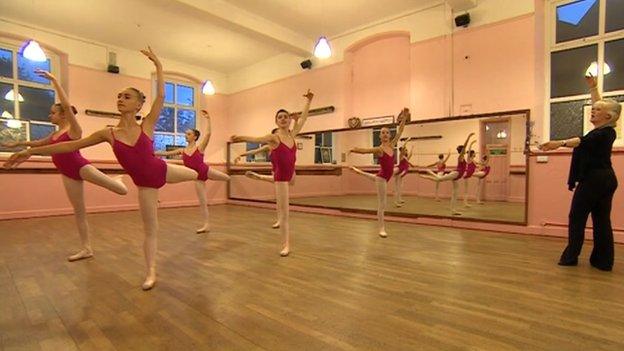How Hull became Britain's hotbed of ballet talent
- Published
Hull's Skelton Hooper ballet school has a record of producing world-class dancers
Hull is being recognised as a centre of world-class ballet talent after producing some of Britain's top dancers. One ballet school has trained many of them. What's its secret?
On the wall of Skelton Hooper dance school, which is tucked behind a church on a side street in Hull, there's a poster signed by Xander Parish, the first Briton to be a principal dancer at Russia's Mariinsky Ballet.
It is dedicated to Vanessa Hooper, who runs the school. Hooper says she first taught Parish and his sister Demelza - who's with the Royal Ballet - in her "babies' class".
On Saturday, both Xander and Demelza will return to their home town for a special performance to re-open Hull New Theatre as part of the City of Culture celebrations.
They will be joined by others who have risen through the Skelton Hooper's ranks - namely Royal Ballet soloist Elizabeth Harrod and Joseph Caley, who has just been made a principal at English National Ballet.
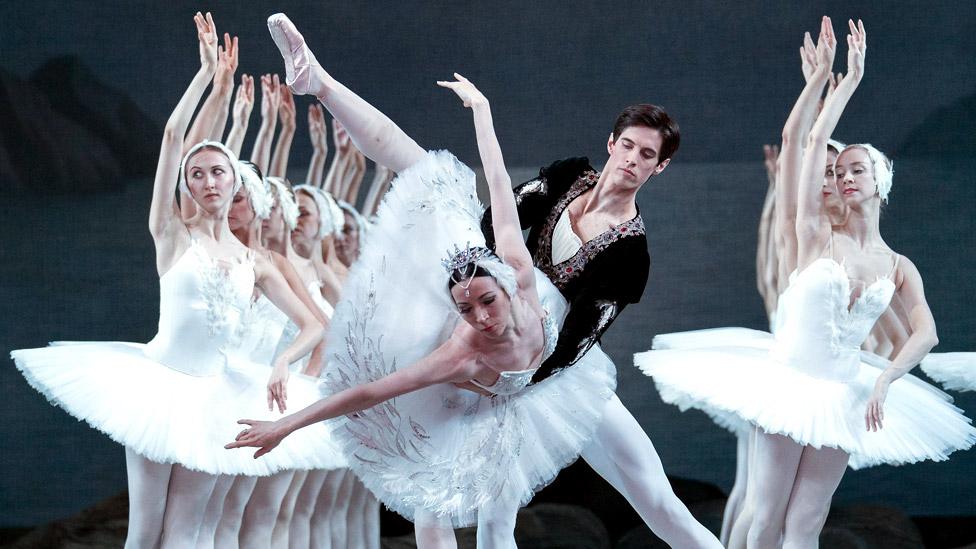
Xander Parish started his dance training at Skelton Hooper
The performance will be curated by the Royal Ballet's director Kevin O'Hare who - you guessed it - trained there too.
"Most schools can maybe talk about one or two pupils who have gone professional and have become principal dancers with a major company," O'Hare says.
"It is quite a phenomenon that so many dancers have come from that school over the years."
O'Hare and his brother Michael, himself a former Royal Ballet principal, trained under Vera Skelton, Hooper's mother, who founded Skelton Hooper after World War II.
"Looking back on it, it was the professionalism of it," Kevin O'Hare recalls. "It wasn't just like you were skipping around in the room - you were really learning how to do ballet seriously and properly.
"It was not scarily disciplined, but it was disciplined. I think a lot of the teachers in the area are like that."

Vanessa Hooper (centre) leading her pupils in a rehearsal
The roll call of Skelton Hooper graduates goes on. There is Joshua McSherry-Gray, who's with the English National Ballet; his twin brother Laurie, at Ballet Vlaanderen in Belgium; and Natasha Oughtred, a former principal with Birmingham Royal Ballet.
Skip back a generation or two, and those to have emerged from other Hull dance schools include former Royal Ballet principal Mark Silver and ex-Birmingham Royal Ballet principal Robert Parker.
Hull seems to have a particularly good record with male dancers - and O'Hare says there was never any stigma about dancing as a boy.
"It wasn't that Billy Elliot image of the one boy among a load of girls," he says. "There was a group of us, so it didn't feel like we were doing something that was not for boys."
And the city has ambition, he believes. "People joke that it's the last stop. You don't go through Hull to get to somewhere.
"But it never felt like that as a young kid growing up. It didn't feel like there were no possibilities. It felt like anything was possible there.
"Work hard, you could achieve something - I think that's how people would feel there."
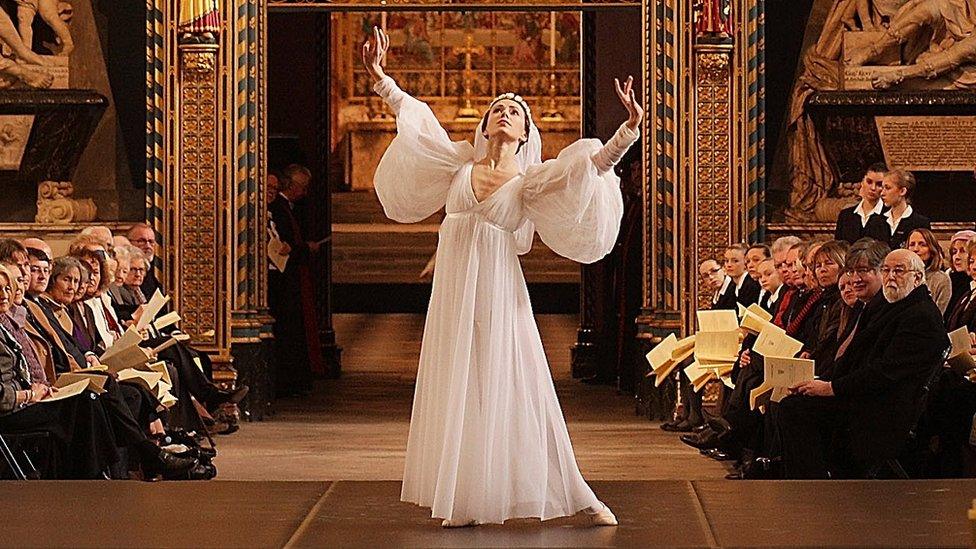
Natasha Oughtred went on to be a principal dancer at Birmingham Royal Ballet
The work ethic required to succeed in the cutthroat world of professional dancing stems from Hull being a "grit city", according to Vanessa Hooper.
"Hull is an isolated city," she explains. "We've struggled very hard. And we've got a lot of grit.
"I find that the children really commit themselves to what they want to do and what they're trying to achieve. I get great commitment."
Miss Vanessa - as she is known to her pupils - admits that some people view her as a hard taskmaster.
"But my belief is that if you don't give 100% it's really not worth bothering with, and I'm desperate for people to achieve," she adds.
"We live in a competitive society - it gets worse and worse - and we've got to really push ourselves to the forefront.
"I sometimes do have to give that push, but I'm very sensitive to how hard I can push."
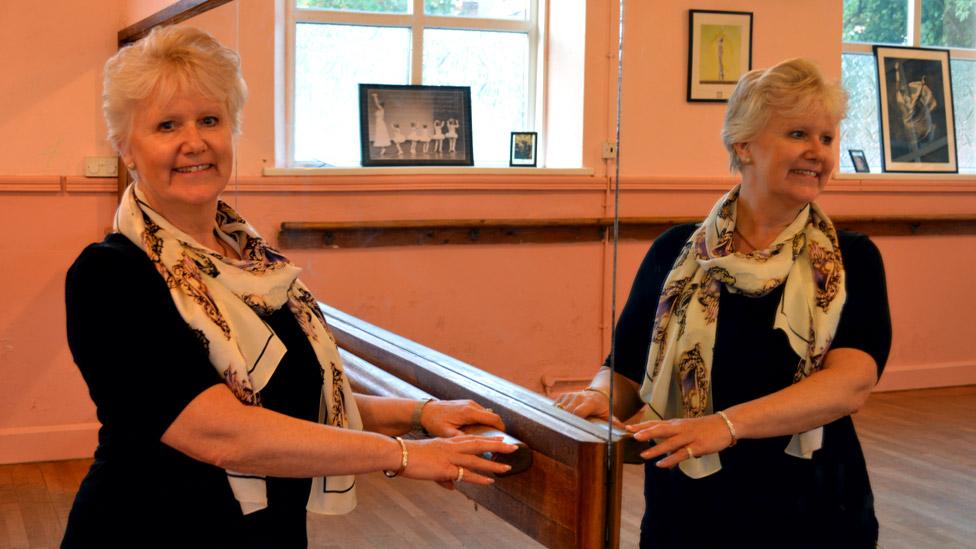
Vanessa Hooper took over the dance school from her mother, Vera Skelton
Skelton Hooper isn't the only successful ballet school in Hull. The Royal Ballet has been working with 100 youngsters from four local dance schools, including Skelton Hooper, on a free performance titled Take Flight, which will take place before the main show on Saturday.
The other schools are the Lyn Wilson and Heather Shepherdson School of Dance (LWHS), the McKeown Irish Dance Academy and the Northern Academy of Performing Arts (Napa).
Napa's former students include Liam Mower, one of the three original Billy Elliots in the West End, who now dances for Matthew Bourne.
Mower played rugby league as a child, and Napa's head of dance Julie Lovewell thinks Hull's pedigree with male dancers has something to do with the city's passion for sport.
Discipline and physicality are required for both, she says. "I'm a really strong believer in how big sport is in Hull - the rugby, the football - and the discipline of sport. I see there's a big connection."
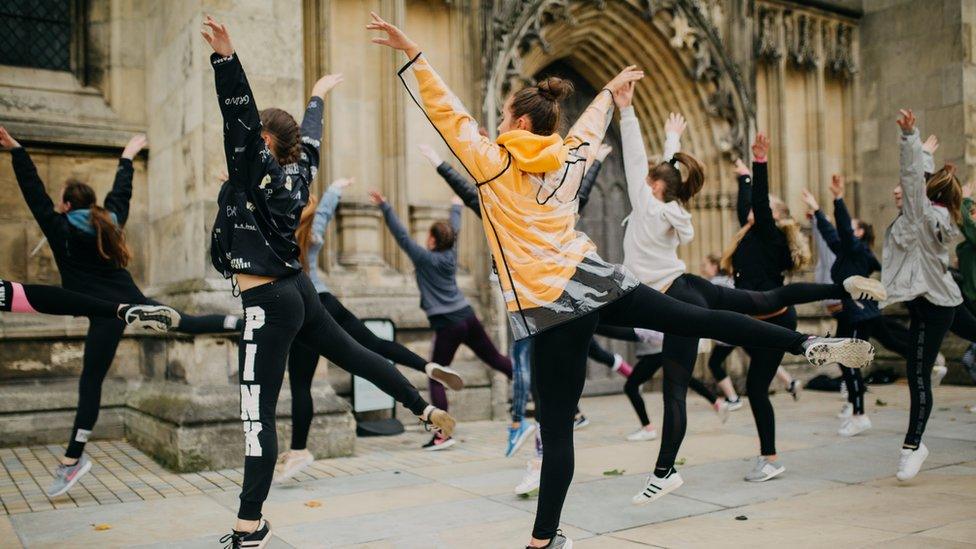
Around 100 local youngsters will take part in the Take Flight performance on Saturday
In recent years, sport players have become more aware of fitness techniques, while the rise of contemporary dance has put more physical demands on dancers.
Lovewell gives the example of a 10-year-old boy who took up dancing after being spotted doing stretches at his rugby club.
"One of our parents was there and said, 'You've got amazingly good hamstrings, really loose, and you've got a real natural flexibility in your hips. Why don't you try dancing?'"
When Xander Parish was a boy, his mind was set on playing cricket - until seeing his sister dance on stage made him jealous.
Kevin O'Hare hopes Hull's current poster boys - the likes of Parish and Joseph Caley - will inspire people growing up in Hull today to take to the stage.
"Each generation has had somebody to look up to," he says. "So I'm hoping some young guy is looking at Xander and Joe and thinking, 'That's what I want to do - and it's possible.'"

Follow us on Facebook, external, on Twitter @BBCNewsEnts, external, or on Instagram at bbcnewsents, external. If you have a story suggestion email entertainment.news@bbc.co.uk.
- Published24 July 2017
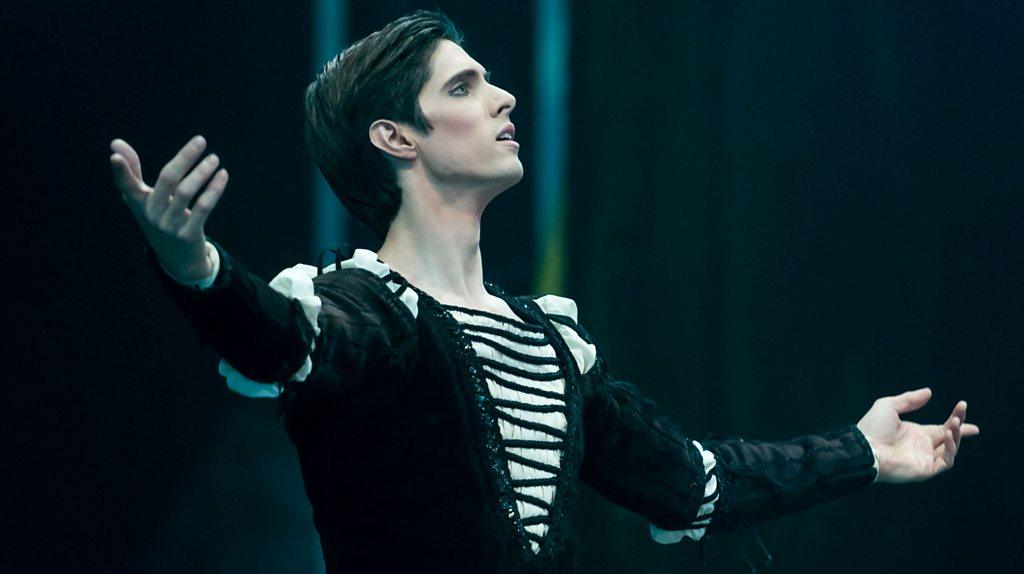
- Published23 March 2015
